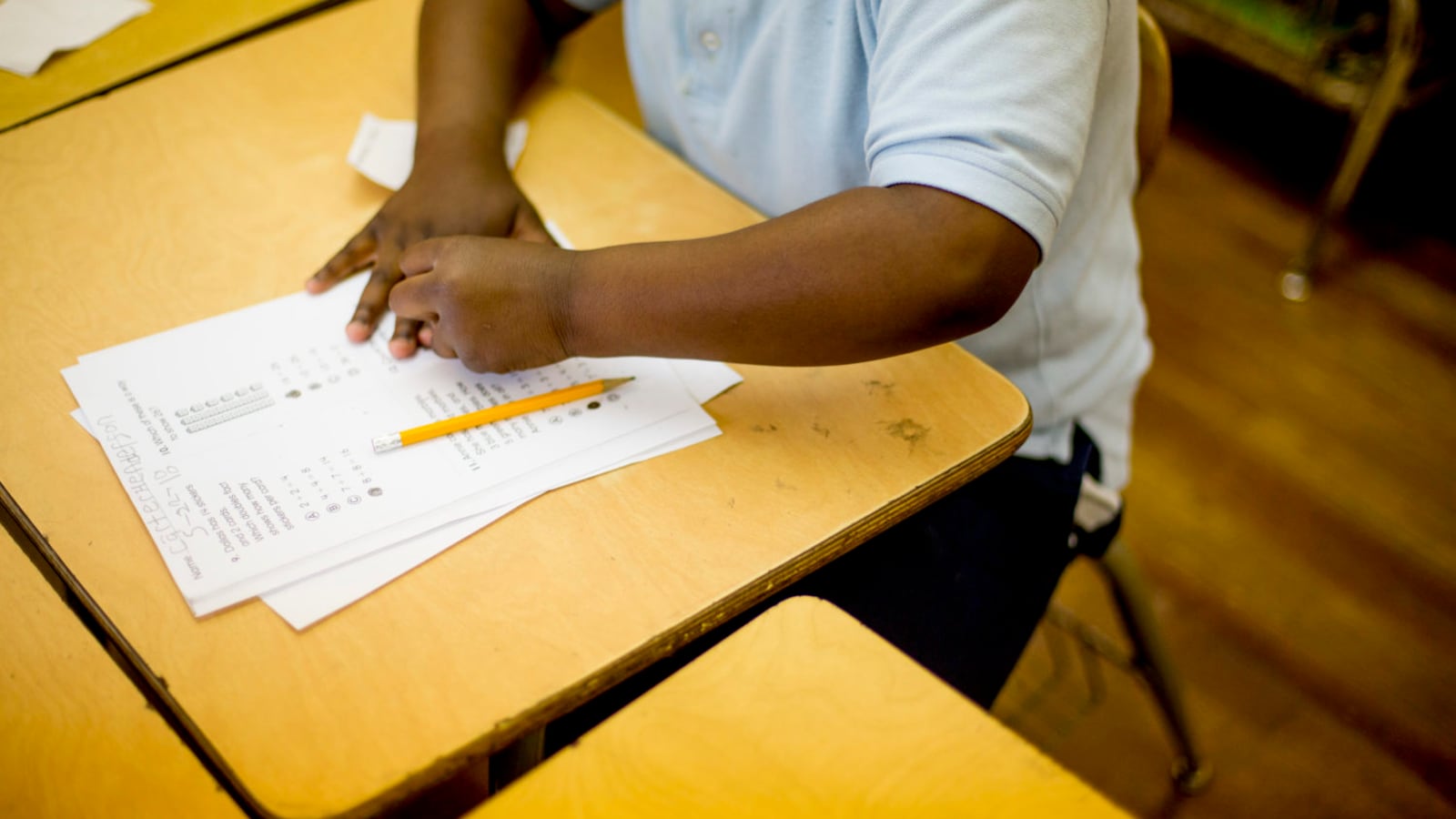A new study finds mixed results for Indianapolis Public Schools dramatic shake-up in recent years: Students in schools within the district boundaries are below the state average when it comes to improvement on tests, but their peers at charter and innovation schools appear to be doing better.
Indianapolis Public Schools students are making smaller gains on math and reading tests than their peers across the state, according to a study released Thursday by the Stanford-based group CREDO, which looked at data from 2014-15 through 2016-17. It is the first in a series of studies examining 10 cities. In Indianapolis charter schools, students are about on par with peers across the state, researchers found.
“The pattern shows that overall Indianapolis schools do underperform the state as a whole during the study period. At the same time, we also noticed the difference by sector within the city,” said Chunping Han, a senior research analyst at CREDO who worked on the study.
The most highly anticipated part of the study is the first major look at the results for innovation schools, a new kind of district-charter partnership. Results from innovation schools show positive signs but left unanswered questions.
The study found that students at innovation schools, which were created in 2015-16 and have been rapidly expanding, made gains in math and reading in 2016-2017 that were similar to the state average. But the gains are not to a statistically significant degree.
If the innovation schools are able to maintain strong student improvement, it would be a remarkable boon for the district. The study is also further evidence that at least some of the innovation schools are helping students make big gains on state tests. When 2016-17 state test scores were released, several innovation schools had jumps in passing rates. But the inconclusive nature of the results also highlights how hard it is to judge a program that is still in its infancy.
Advocates for innovation schools nonetheless took the results of the study as support for the new strategy.
“We think this is an exciting indication that the work is leading to meaningful outcomes for students and is an initial validation of the innovation schools strategy as well,” said Brandon Brown, CEO of The Mind Trust, an Indianapolis nonprofit that supports innovation schools and provided technical assistance to CREDO with information on local schools.
A researcher who was not involved in the CREDO study cautioned that the results describe student test gains, but they do not explain why some students outperform others.
“I don’t think this analysis answers the question of ‘are Indianapolis Public Schools effective at boosting student achievement? Or are charter schools in Indianapolis effective at boosting student achievement?’ ” said Joseph Waddington, an assistant professor in the department of educational policy studies and evaluation at the University of Kentucky.
Waddington, who has co-authored research on the impact of Indiana’s school voucher program and school choice more broadly in Indianapolis, said that in order to draw conclusions about whether charter schools are responsible for larger test score gains, there would need to be “a more carefully constructed comparison group.”
Students who chose to attend Indianapolis charter schools, for example, may have access to far more school options than students in other parts of the state, he said.
“You are making these apples and oranges comparisons between students who have different access to schooling alternatives,” Waddington added.
CREDO typically matches students at charter schools with peers who attend nearby district schools — a method that has faced some criticism. In this case, the study compared students at charter, innovation, and Indianapolis Public Schools to students at schools that mirror the state average test score gains and demographics.
In a statement, Indianapolis Public Schools highlighted the positive results.
“The 2019 CREDO study confirms the exciting developments we’re seeing unfold in the classrooms of our innovation schools,” the statement read. “The positive academic outcomes are proof the strategies implemented by our talented school leaders are working. Likewise, we’re encouraged by strides we’re also seeing in our traditional schools as those outstanding leaders utilize increased autonomy to improve their growth.”
Since the district began creating innovation schools in 2015, their ranks have rapidly swelled. There are now 20 innovation schools, which enroll about one in four of Indianapolis Public Schools’ students.
Innovation schools have drawn national attention from advocates for collaboration between traditional districts and charter schools. They are under the Indianapolis Public Schools umbrella, and the district gets credit for their test results from the state. But the schools are run by outside charter or nonprofit managers. The network includes a variety of schools, including failing campuses that were overhauled with charter partners, new schools, and previously independent charters.

